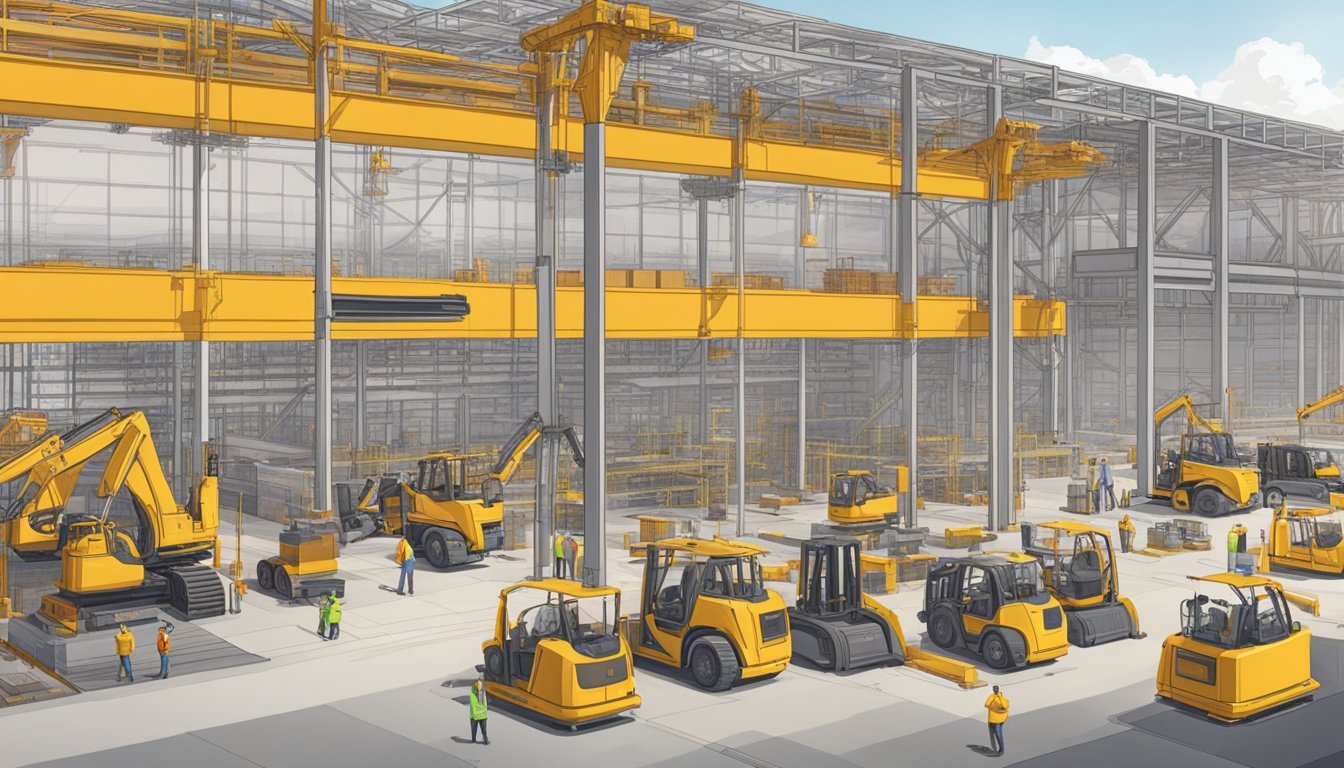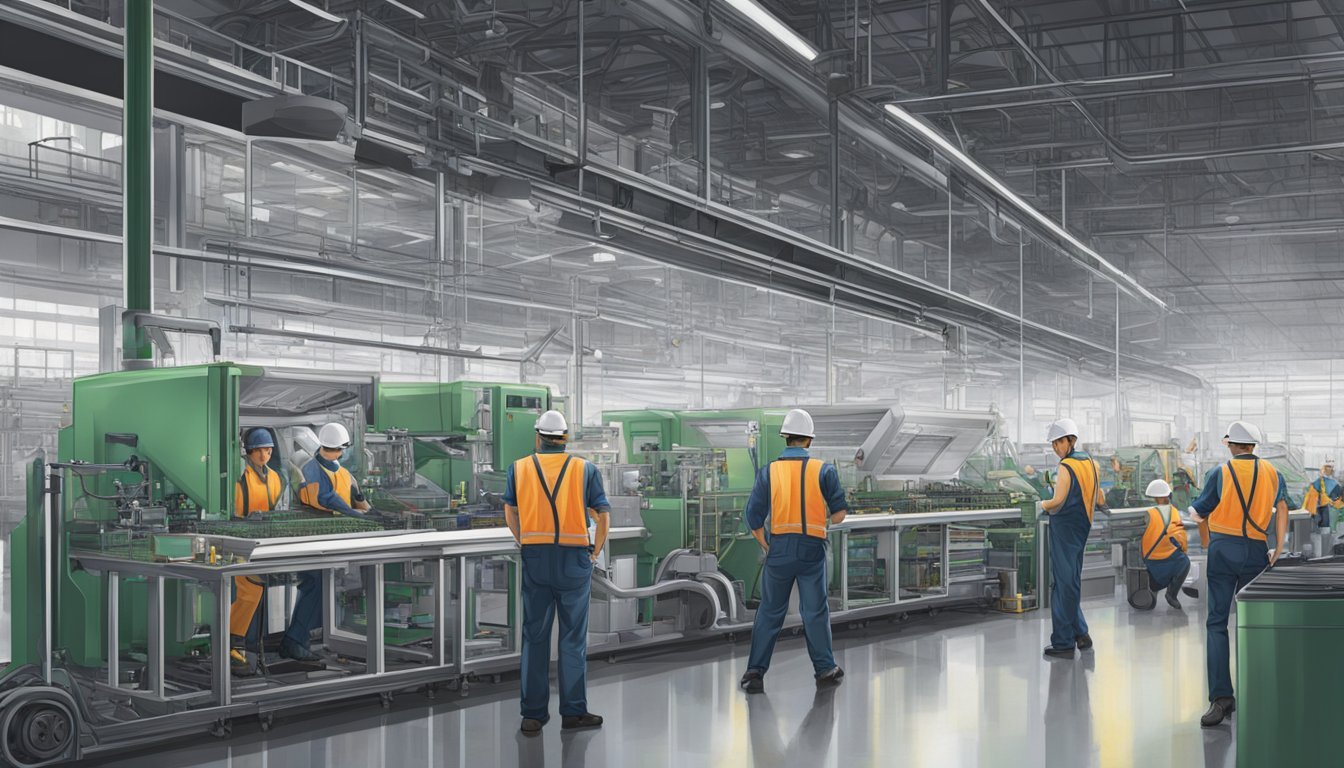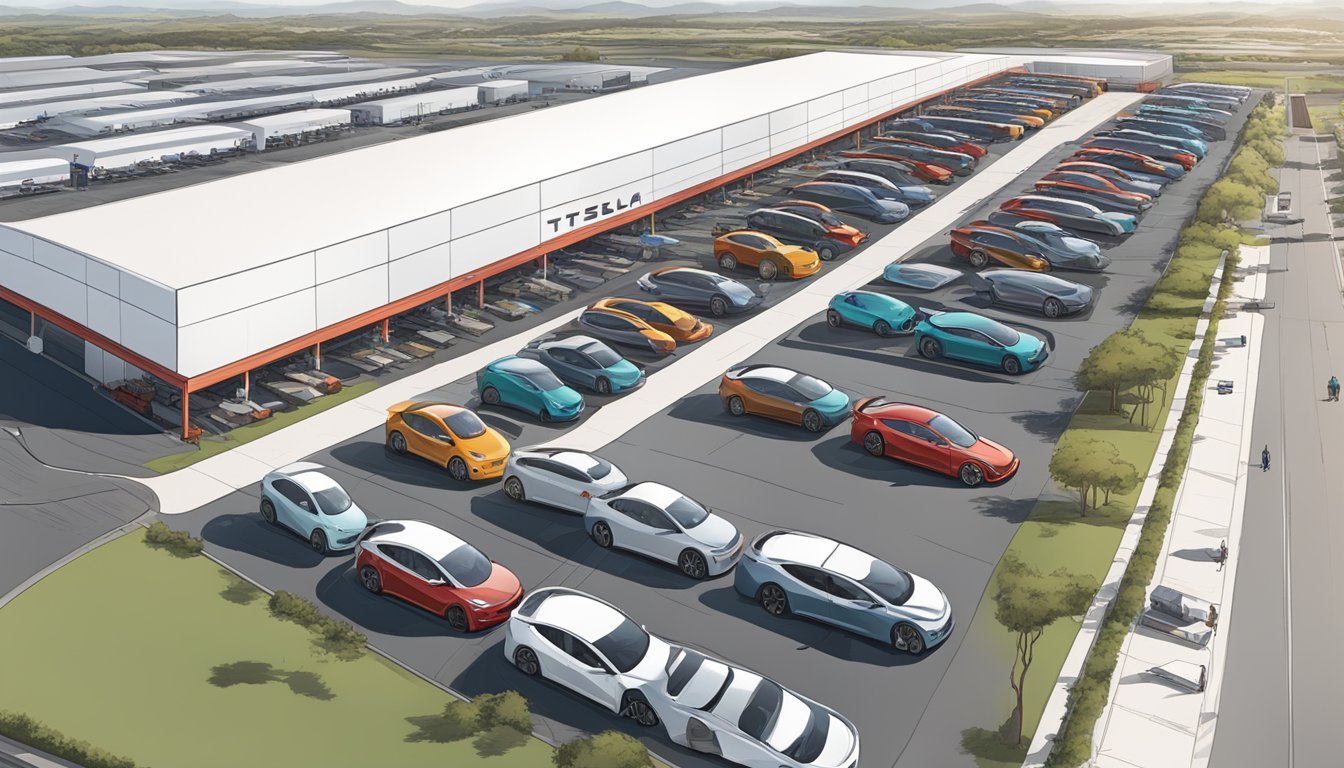Tesla's Giga Texas Triumphs and Tribulations: Battery Milestone Amid Massive Layoffs and Safety Woes
Tesla's Austin factory, known as Giga Texas, has been making headlines recently with both positive developments and challenges. The electric vehicle manufacturer reached a significant milestone in battery production at the facility, demonstrating progress in its manufacturing capabilities.
However, Tesla is now facing workforce reductions at its Austin plant, with plans to lay off nearly 2,700 employees. This news comes as a shock to many workers, who describe the situation as heartbreaking. The layoffs are part of a broader restructuring effort by the company, which has impacted its stock price negatively.
Reports of safety concerns at Giga Texas have also emerged, with employees citing incidents involving explosions, concussions, and injuries related to robotic equipment. These allegations raise questions about workplace safety practices at the facility and may prompt increased scrutiny of Tesla's operations in Austin.
Tesla's Expansion in Austin
Tesla continues to grow its presence in Austin, Texas through major expansion plans for its Gigafactory. The electric vehicle manufacturer aims to significantly increase production capacity and create new jobs in the region.
Overview of Giga Texas
Tesla's Gigafactory Texas, located in Austin, is undergoing a massive expansion. The company has filed permits to double the size of the facility, adding approximately 1.4 million square feet of space. This expansion involves constructing four new buildings at the site.
The enlarged factory will boost Tesla's manufacturing capabilities for vehicles and other products. While specific details about the expansion plans remain limited, the additional space is likely to accommodate new production lines and increased output.
Significance for the Local Economy
Tesla's expansion of Gigafactory Texas is poised to have a substantial impact on the Austin area economy. The project represents an investment of over $700 million in construction and new equipment.
The enlarged facility is expected to create numerous job opportunities, potentially adding thousands of new positions to Tesla's workforce in Austin. This influx of jobs could provide a significant boost to local employment and attract more skilled workers to the region.
The expansion may also benefit local suppliers and contractors, stimulating economic activity in related industries. As Tesla increases its footprint in Austin, it could further solidify the city's position as a growing hub for technology and manufacturing.
Recent Developments at Tesla Austin
Tesla's Austin Gigafactory has seen significant progress in construction, production, and technological advancements. The facility continues to expand its footprint and capabilities, with a focus on vehicle manufacturing and innovative processes.
Construction Updates
Tesla plans to invest $717 million in expanding the Austin Gigafactory. The expansion will add 1.4 million square feet of space, spread across four new buildings. This growth demonstrates Tesla's commitment to increasing production capacity and creating jobs in the area.
The construction project aims to further boost economic activity in Travis County. Since its opening, Giga Texas has already generated $2 billion in economic impact and employs approximately 15,000 people.
Tesla's expansion plans align with its promise to create at least 5,000 jobs, with half reserved for Travis County residents. This commitment was made in exchange for tax incentives from the local government.
Model Y Production
The Austin Gigafactory has been ramping up production of the Model Y, Tesla's popular electric SUV. The facility's state-of-the-art manufacturing processes have allowed for increased output and efficiency in Model Y production.
Tesla has implemented advanced robotics and automation systems to streamline the assembly process. These innovations have contributed to faster production times and improved quality control for the Model Y vehicles manufactured in Austin.
The company continues to refine its production techniques, aiming to meet growing demand for the Model Y in North America and potentially other markets served by the Austin facility.
Cybertruck Anticipation
Tesla's Austin Gigafactory is set to begin manufacturing the highly anticipated Cybertruck. The futuristic electric pickup truck has faced multiple production delays, but Tesla is now preparing for its launch.
The company has been installing specialized equipment and tooling necessary for Cybertruck production. This includes large casting machines for the vehicle's unique exoskeleton and advanced welding systems for its stainless steel body.
Tesla aims to start Cybertruck production later this year, marking a significant milestone for both the Austin facility and the company's product lineup. The launch of this innovative vehicle is expected to further solidify Tesla's position in the electric vehicle market.
Advances in Paint Technology
Tesla has made significant strides in paint technology at its Austin Gigafactory. The facility features a cutting-edge paint shop that incorporates advanced application methods and environmentally friendly processes.
The company has introduced new color options and improved paint durability for vehicles produced in Austin. Tesla's paint shop utilizes robotics and precision spraying techniques to achieve consistent, high-quality finishes.
These advancements in paint technology not only enhance the aesthetic appeal of Tesla vehicles but also contribute to their longevity and resale value. The Austin facility's paint innovations may eventually be implemented across Tesla's global manufacturing network.
Product Innovations and Enhancements
Tesla's Austin facility is spearheading cutting-edge advancements in electric vehicle technology. The focus lies on revolutionary battery production and autonomous driving capabilities.
4680 Battery Cell Production
Tesla's Austin Gigafactory is ramping up production of the innovative 4680 battery cells. These larger, more efficient cells promise increased energy density and lower production costs. The new design allows for faster charging times and extended range in Tesla's electric vehicles.
The factory aims to reach full production capacity by mid-2025. This will significantly boost Tesla's ability to meet growing demand for its EVs. The 4680 cells are expected to debut in the Cybertruck and future Model Y variants.
Integration of Robotaxi Features
Tesla is advancing its autonomous driving technology at the Austin facility. The company is integrating advanced Robotaxi features into its vehicle lineup. These enhancements include improved sensors, more powerful onboard computers, and refined software algorithms.
Testing of Robotaxi capabilities is ongoing within the factory grounds. Tesla aims to launch a fully autonomous ride-hailing service by 2026. The company is working closely with regulators to ensure compliance and safety standards are met.
Operational Efficiency and Output
Tesla's Austin factory has made significant strides in optimizing production processes and increasing output capacity. Recent improvements have focused on streamlining manufacturing lines and enhancing stamping operations.
Optimization of Production Lines
Tesla's Giga Texas facility has ramped up its annual vehicle production capacity to over 650,000 units. The factory now employs advanced automation techniques to boost efficiency. Robotic systems handle complex assembly tasks, reducing production time and minimizing errors.
The Model Y production line has seen notable enhancements. Cycle times have decreased, allowing for faster throughput. Tesla has also implemented new quality control measures, utilizing AI-powered inspection systems to catch defects early.
Energy efficiency improvements have reduced power consumption per vehicle produced. The factory now uses more renewable energy sources, aligning with Tesla's sustainability goals.
Stamping Process Improvements
Tesla's stamping operations at Giga Texas have undergone substantial upgrades. New high-speed stamping presses increase output while maintaining precision. These presses can now produce body panels at a rate 30% faster than previous models.
Advanced die designs reduce material waste and improve part consistency. Tesla has also implemented real-time monitoring systems for stamping equipment, enabling predictive maintenance and minimizing downtime.
The stamping area layout has been optimized for better material flow. Automated guided vehicles now transport stamped parts efficiently between stations, reducing handling time and potential damage.
Economic and Social Impact
Tesla's presence in Austin has brought significant economic activity and job growth to the region. The company has rapidly become a major employer while also investing in local communities.
Job Creation and WARN Act Compliance
Tesla now employs over 22,000 people in Austin, making it the city's largest private employer. This represents an 86% increase in headcount compared to the previous year. The company's workforce expansion has provided thousands of new job opportunities for local residents.
Tesla has not reported any mass layoffs in Austin that would trigger WARN Act notifications. The WARN Act requires large employers to provide advance notice of significant job cuts. Tesla's continued hiring suggests stable employment in the area.
Community Integration in Del Valle
Tesla has made efforts to integrate with the Del Valle community where its Gigafactory is located. The company estimates it has paid over $49 million in taxes to Del Valle ISD since 2020. This influx of funding supports local schools and infrastructure.
Tesla's presence has spurred economic development in Del Valle. New businesses and housing have emerged to serve the growing workforce. The company organizes community events and educational programs to engage with residents.
Overall economic activity from Tesla and related companies in Austin is estimated at $11.1 billion annually. This has boosted the region's tech and manufacturing sectors.
Company Performance
Tesla's latest financial results reveal key insights into the company's current performance and future outlook. Production challenges and market dynamics are impacting growth projections.
Insights from Latest Earnings Call
In its Q4 2023 earnings report, Tesla warned of slower growth expectations for 2024. The company did not provide specific numerical targets, signaling uncertainty in the near-term outlook.
Tesla's Gigafactory in Austin remains a focal point for production. Recent analyst visits to the facility have generated positive sentiment. Bank of America Securities expressed increased confidence following a tour of Giga Austin.
The Cybertruck faces manufacturing hurdles. Production was temporarily halted for three days at the Austin plant, highlighting potential challenges in ramping up this new model.
Tesla plans to release a low-cost electric vehicle in the first half of 2025. This strategic move aims to expand market share in more affordable segments.
Full Self-Driving technology progress and autonomous driving capabilities are crucial factors for Tesla's future performance. The company is betting heavily on these innovations to drive growth.
Future Directions and Speculations
Tesla's Austin facility stands poised for significant growth and innovation. The company's plans signal an ambitious trajectory for electric vehicle production and technological advancement in the coming years.
Potential for Cybertruck Success
The Cybertruck, set to be manufactured at Tesla's Austin Gigafactory, represents a bold entry into the pickup truck market. Its unique design and electric powertrain could disrupt traditional truck sales.
Tesla aims to capitalize on the growing demand for electric vehicles in the truck segment. The Cybertruck's success may hinge on its ability to meet performance expectations and attract both traditional truck buyers and EV enthusiasts.
Production scaling will be crucial. Tesla's track record of ramping up manufacturing for new models will be put to the test as they work to fulfill pre-orders and meet market demand.
Long-Term Vision for Electric Mobility
Tesla's expansion plans for the Austin facility indicate a commitment to increasing production capacity. The company is eyeing an additional 5 million square feet of manufacturing space, suggesting ambitious goals for vehicle output.
This growth aligns with Tesla's broader mission to accelerate the world's transition to sustainable energy. The Austin Gigafactory may become a key hub for developing and producing next-generation electric vehicles.
Tesla's focus on vertical integration could lead to advancements in battery technology and autonomous driving features at the Austin site. These innovations may shape the future of electric mobility beyond just vehicle production.








